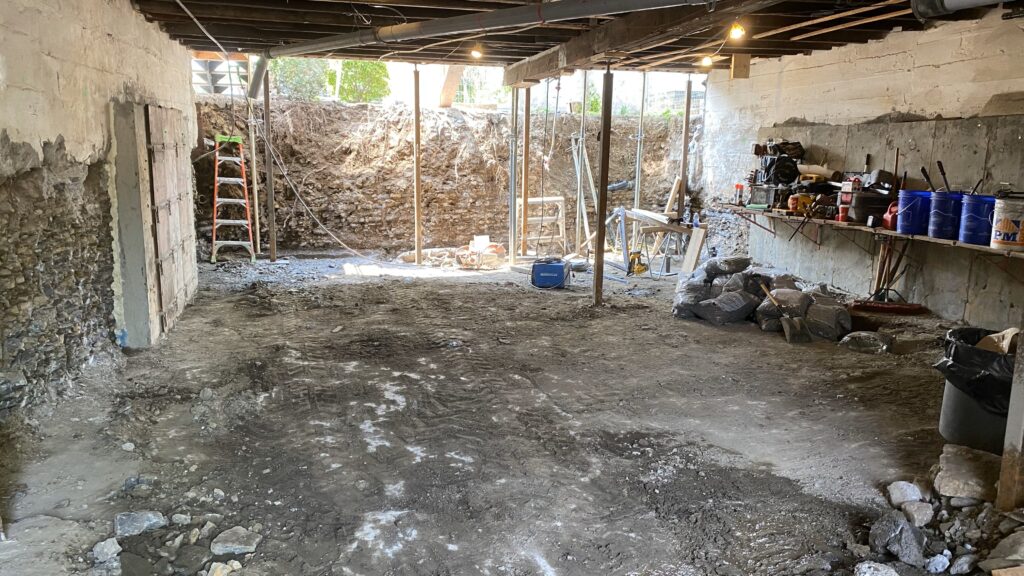
IDENTIFYING SIGNS OF FOUNDATION DETERIORATION IN MONTREAL
Living in Montreal, with its harsh winters can pose significant challenges for building foundations. By recognizing foundation problems early, you can avoid costly repairs and maintain the structural integrity of your home. Here are some critical signs to watch for, which will help you identify potential foundation issues promptly: If you observe visible cracks, sinking of the ground, abnormal tilting, or deviations in the walls of your foundation, it often indicates a deterioration that should not be overlooked. These symptoms can signal a safety and structural preservation emergency for your residence.
- Cracks in Walls or Floors
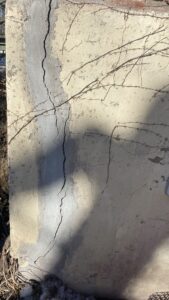
Cracks are often the first visible indicators of foundation issues. They can appear both inside and outside your home. Vertical or stair-step cracks in masonry walls, concrete floors, or brick exteriors are particularly common. Monitoring the width of these cracks is essential: a widening crack could indicate more severe foundation movement. Regularly inspecting your walls and floors for new or expanding cracks can save you from more extensive damage in the future.
- Sticking Doors and Windows
If you notice that your doors or windows begin to stick, become difficult to open, or do not close properly, it might be a sign of foundation movement. This problem can also manifest as doors or windows that seem to close on their own or do not latch properly. Paying attention to these signs can help you detect foundation issues early and take corrective action before more significant problems develop.
- Uneven or Sinking Floors
Another common sign of foundation trouble is when floors start to develop uneven areas or appear to be sinking. This is often caused by poor soil compaction, changes in soil composition, or moisture levels around your foundation. Uneven floors can lead to tripping hazards and further structural damage if not addressed promptly. Regularly checking your flooring for new slants or dips can help you catch potential foundation issues early.
- Water Infiltration
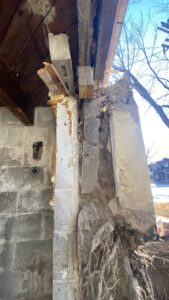
Water infiltration in the basement or crawl space is a telltale sign of foundation problems. Water can easily find its way into small openings, leading to more significant damage over time. This can result in mold growth, wood rot, and other serious issues. Inspecting your basement for water stains, dampness, or standing water after heavy rains can help you identify potential foundation cracks or other issues that need immediate attention.
- Frost Heave Effects
In Montreal, the effects of frost heave are a critical sign to watch for. Frost heave occurs when the ground freezes and thaws, causing the soil to expand and contract. This cycle can exert considerable pressure on your foundation, leading to cracks and movement. To mitigate frost heave’s impact, ensure proper drainage around your home and consider insulation solutions for your foundation.
- Preventative Measures and Regular Maintenance
To protect your home in Montreal, it’s essential to take preventative measures and perform regular maintenance on your foundation. This can include ensuring proper grading and drainage around your home, maintaining a stable moisture level in the soil, and conducting regular inspections to catch early signs of damage. By staying vigilant and addressing issues promptly, you can avoid costly repairs and extend the life of your foundation.
For reliable foundation repair services in Montreal, trust the experts who understand the local conditions and have the expertise to tackle these challenges. Contact us today to schedule an inspection and ensure your home’s foundation remains strong and secure.
OUR CUSTOMIZED SOLUTIONS
Replacing a foundation is one of the most significant repairs a homeowner can undertake. Whether due to severe damage, deterioration, or shifting soil conditions, understanding the process of foundation replacement is essential. This guide breaks down the steps involved in replacing a foundation, providing you with valuable insights and considerations.
1. Initial Assessment and Planning
Evaluation:
The first step in foundation replacement is a thorough evaluation of the existing foundation. Engage a highly qualified building engineer or foundation specialist to assess the damage and confirm that replacing the foundation is necessary. Their expertise will ensure that all underlying issues are considered before moving forward.
Design and Planning:
Once you have the necessary approvals, create a detailed plan that includes timelines, materials needed, and an estimated budget. It may also be wise to inform your neighbors about the upcoming work, especially if it will cause disruption.
Permits and Regulations:
Before any work begins, you must obtain the appropriate permits from your local building authority. This step ensures compliance with local building codes and regulations, which is crucial to the success and legality of your project.
2. Preparing the Site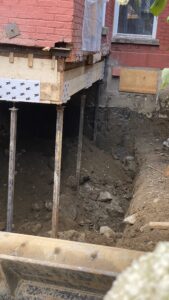
Site Preparation:
Begin by clearing the area around your home. Remove any obstacles such as plants, decks, or other structures that may interfere with the foundation work.
Excavation:
Next, excavate the soil around the existing foundation to expose it fully. This step is critical for assessing the current foundation’s condition and preparing for the new installation.
Temporary Support:
Install temporary supports using steel beams and hydraulic jacks to hold the home in place while work is underway. This measure is vital for maintaining the safety and stability of the structure.
3. Removing the Old Foundation
Demolition:
Carefully demolish the old foundation using excavating machinery. It’s important to do this methodically to avoid causing damage to the home above.
Disposal of Debris:
Dispose of all debris following local regulations, ensuring an environmentally responsible approach to waste management.
4. Installing the New Foundation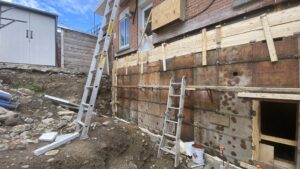
Prepare the Ground:
Once the old foundation is removed, excavate to the appropriate depth as dictated by your design plan. Compact the underlying soil to provide a solid base for the new foundation.
Formwork and Reinforcement:
Construct formwork that shapes the new foundation, ensuring it aligns with your design specifications. Reinforce the formwork with steel rebar or other materials to enhance strength.
Pouring Concrete:
Pour concrete into the formwork. It’s essential to do this evenly to eliminate air pockets, which can weaken the foundation.
5. Finalizing the Structure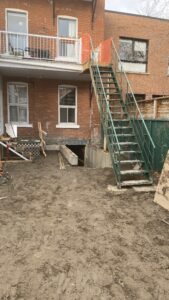
Removing Formwork and Supports:
Once the concrete is adequately cured, carefully remove the formwork. Replace temporary supports with permanent structures as outlined in your building plan.
Backfilling and Grading:
Backfill the areas around the new foundation. Grade the soil to slant away from the foundation, which will help manage water drainage and prevent future issues.
6. Post-Construction Considerations
Inspecting the New Foundation:
Conduct a final inspection with a highly qualified building engineer to verify that the new foundation adheres to local codes and design specifications. Their assessment will ensure that everything functions safely and effectively.
Restoring the Site:
After the foundation replacement is complete and inspected, restore the landscape, including any pathways or structures that were temporarily removed or damaged.
Conclusion
Replacing a foundation is a significant undertaking that requires careful planning and execution. By following these steps and working with a highly qualified building engineer, homeowners can ensure that the process goes smoothly and that their homes remain structurally sound. If you’re facing foundation issues, don’t hesitate to reach out to professionals who can guide you through the assessment and replacement process. Protect your investment by ensuring your foundation is robust and reliable for years to come!
If you need assistance or an evaluation of your foundation, Contact us today for expert advice and support tailored to your specific needs.

